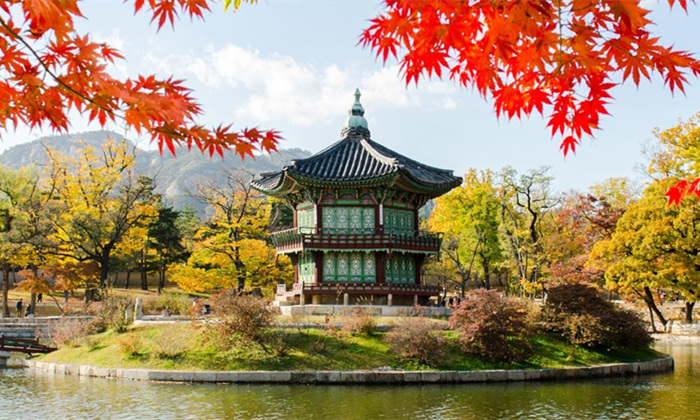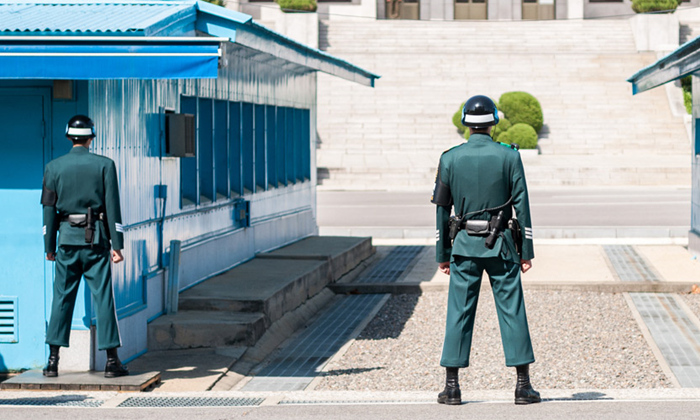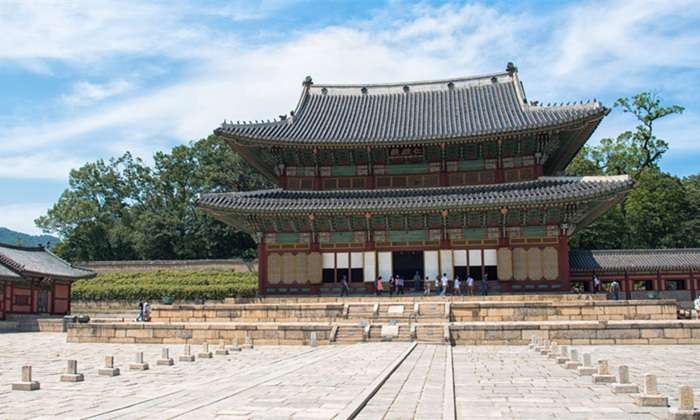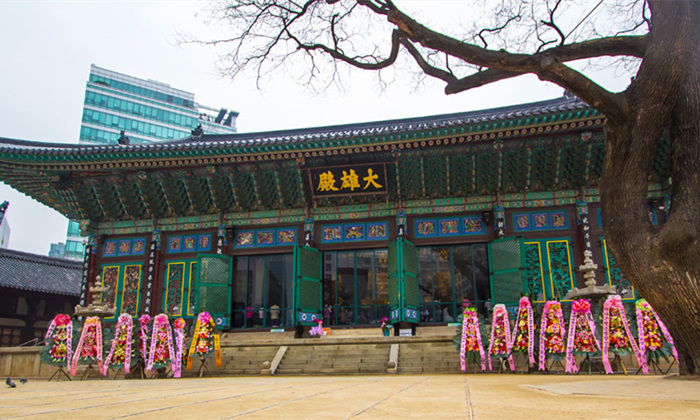The Top Attractions in South Korea
South Korea is known for its metropolitan capital, Seoul, but it also displays its long history in ancient Buddhist temples, museums and royal palaces. If you’re looking for the top sights to visit in South Korea, you are at the right place! In order to help you plan your Korea journey, we have created this list of the famous tourist attractions in South Korea.
GyeongbokGung
Built in 1395 in the city of Seoul, Gyeongbokgung Palace is the largest of the original Five Grand Palaces built by the Joseon Dynasty. It was the main palace of the Joseon dynasty. The palace is the northernmost of the group of palaces, hence its nickname, "The Northern Palace." The palace is noted as the most beautiful of the five palaces, and its complex is also home to the National Palace Museum of Korea and the National Folk Museum.

Korean Demilitarized Zone
The Korean Demilitarized Zone is the famous strip of land separating South Korea from North Korea, and it roughly divides the Korean peninsula in half. It was established at the end of the Korean War in a 1953 agreement between North Korea, China, and the United Nations. The zone is over 250 km (160 miles) long and 4 km (2.5 miles) wide. There is a meeting point in the Joint Security Area where negotiations take place.

Korean Folk Village
Korean Folk Village (Minsok village) is a popular destination for travelers to Korea. This interesting village is filled with traditional Korean culture from the Joseon period to the modern day. Visitors can experience cultural classes, seasonal customs, and the shaman faith, and they can observe farming villages, private houses, a Confucian academy, a village street, a village school, workshops, and cultural costume performances.

Changdeok Palace
Changdeokgung Palace is one of the Five Grand Palaces of the Joseon Dynasty. It was the second royal villa built after the construction of Gyeongbukgung Palace. Its grounds contain a public palace area and a royal family residence. There is also a rear garden with a pond, and a pavilion. All of that is set on a hilly site with an area of 58 hectares. The palace is designed in the Far Eastern style, and the architecture seamlessly merges with its landscape to produce an aesthetically pleasing site that is now a UNESCO World Heritage Site.

National Folk Museum
The National Folk Museum of Korea can be found inside Gyeongbokgung Palace. The museum was established in 1945 by the U.S. Government, and it later merged with the National Museum of Korea. In 1975, the museum moved, and in 1993, it opened as its present location on the grounds of Gyeongbokgung. The museum has a collection of more than 4,000 exhibits and replicas that show the Korean lifestyle of common people in the past.

Jogyesa Temple
First established in 1395 in the early days of the Joseon Dynasty, Jogyesa Temple is the chief temple of the Jogye Order of Korean Buddhism. The temple offers visitors many opportunities to learn about Buddhism; there are temple stay programs that allow those from foreign countries to get a glimpse of the temple's inner workings. In 1998,

North Seoul Tower
Since opening in 1980, Seoul Tower has become one of South Korea's most popular tourist attractions. Standing at 237 meters and sitting atop the 243-meter high Namsan Mountain, the observatory gives visitors a great view of Seoul and its surrounding area. Now called N Seoul Tower, the 'N' stands for the tower's 'new' look after its 15 billion won remodeling in 2005. Today, the tower is used by a number of Korean media stations like KBS, MBC, and SBS. The spectacular view at night is a reason why many people love heading to the top of N Seoul Tower.

South Korea is known for its metropolitan capital, Seoul, but it also displays its long history in ancient Buddhist temples, museums and royal palaces. If you’re looking for the top sights to visit in South Korea, you are at the right place! In order to help you plan your Korea journey, we have created this list of the famous tourist attractions in South Korea.
GyeongbokGung
Built in 1395 in the city of Seoul, Gyeongbokgung Palace is the largest of the original Five Grand Palaces built by the Joseon Dynasty. It was the main palace of the Joseon dynasty. The palace is the northernmost of the group of palaces, hence its nickname, "The Northern Palace." The palace is noted as the most beautiful of the five palaces, and its complex is also home to the National Palace Museum of Korea and the National Folk Museum.

Korean Demilitarized Zone
The Korean Demilitarized Zone is the famous strip of land separating South Korea from North Korea, and it roughly divides the Korean peninsula in half. It was established at the end of the Korean War in a 1953 agreement between North Korea, China, and the United Nations. The zone is over 250 km (160 miles) long and 4 km (2.5 miles) wide. There is a meeting point in the Joint Security Area where negotiations take place.

Korean Folk Village
Korean Folk Village (Minsok village) is a popular destination for travelers to Korea. This interesting village is filled with traditional Korean culture from the Joseon period to the modern day. Visitors can experience cultural classes, seasonal customs, and the shaman faith, and they can observe farming villages, private houses, a Confucian academy, a village street, a village school, workshops, and cultural costume performances.

Changdeok Palace
Changdeokgung Palace is one of the Five Grand Palaces of the Joseon Dynasty. It was the second royal villa built after the construction of Gyeongbukgung Palace. Its grounds contain a public palace area and a royal family residence. There is also a rear garden with a pond, and a pavilion. All of that is set on a hilly site with an area of 58 hectares. The palace is designed in the Far Eastern style, and the architecture seamlessly merges with its landscape to produce an aesthetically pleasing site that is now a UNESCO World Heritage Site.

National Folk Museum
The National Folk Museum of Korea can be found inside Gyeongbokgung Palace. The museum was established in 1945 by the U.S. Government, and it later merged with the National Museum of Korea. In 1975, the museum moved, and in 1993, it opened as its present location on the grounds of Gyeongbokgung. The museum has a collection of more than 4,000 exhibits and replicas that show the Korean lifestyle of common people in the past.

Jogyesa Temple
First established in 1395 in the early days of the Joseon Dynasty, Jogyesa Temple is the chief temple of the Jogye Order of Korean Buddhism. The temple offers visitors many opportunities to learn about Buddhism; there are temple stay programs that allow those from foreign countries to get a glimpse of the temple's inner workings. In 1998,

North Seoul Tower
Since opening in 1980, Seoul Tower has become one of South Korea's most popular tourist attractions. Standing at 237 meters and sitting atop the 243-meter high Namsan Mountain, the observatory gives visitors a great view of Seoul and its surrounding area. Now called N Seoul Tower, the 'N' stands for the tower's 'new' look after its 15 billion won remodeling in 2005. Today, the tower is used by a number of Korean media stations like KBS, MBC, and SBS. The spectacular view at night is a reason why many people love heading to the top of N Seoul Tower.

Related Articles You May Like
Most Frequently Asked Questions
Japan Office
- Tel: +81 50-3701-6391
- Email: info@japanholiday.com
- Working Hours: 8am-7pm, (Japan)
USA Office
- Tel: +1-6265617117
- Email: info@japanholiday.com
- Working Hours: 8am-7pm, Pacific Time

